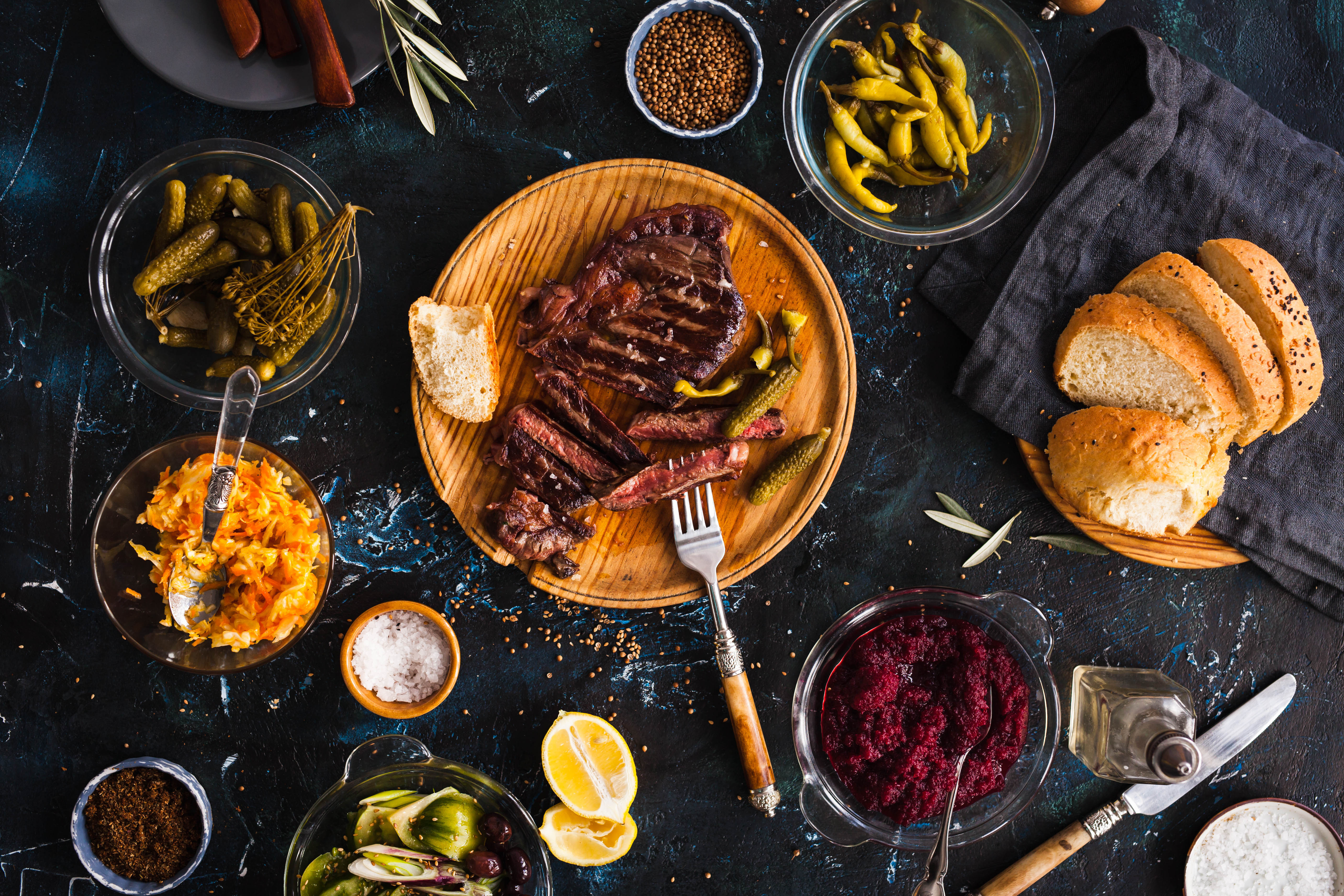Here’s what you need to know…
- Eating out at a restaurant can be difficult when you’re trying to lose weight, particularly if you’re following a rigid diet that severely restricts choices of what you can eat.
- Deciding what you’re going to eat in advance will ensure that you don’t end up in a calorie surplus and gain any weight.
- Ordering simple, basic meals will make it easy for you to estimate the number of calories in a meal.
- Don’t skip meals in an attempt to save your calories for later in the day. Your ravenous hunger will get the better of you and you’ll end up overeating to make up for the shortfall.
- Don’t be afraid to ask to change your order to ensure it’s more ‘diet friendly’ – order sauces on the side and ask them to go easy on the butter!
Eating out at a restaurant can be difficult when you’re on a diet. The food is packed with calories, the portion sizes are often on the generous side and there is seldom any nutritional information included on the menu. Based on those three factors alone it should be easy to see how you can end up consuming half a day’s calories in just one sitting. To help you avoid finding yourself in this scenario, I’m going to share four simple strategies that will enable you to eat out with family, friends, and colleagues without jeopardizing your results. In no particular order, here are my top tips for eating out when you’re on a diet;
1 – Plan Ahead
By deciding what you’re going to eat in advance you can ensure that you remain within your daily calorie and macronutrient targets. This is of crucial importance as you will continue to lose weight, regardless of what you eat, as long as you stay in a calorie deficit. To decide on what you’re going to eat, you’ll need to visit the restaurant’s website to check the menu. Once you have the menu in front of you scan it for the options that are most likely to fit with your calorie and macronutrient targets. Most high street restaurants and some high ones too post the nutritional information of all the food they serve on their websites. This will make it much easier for you to ascertain what’s going to be the best meal option for you. Once you have made your decision, it is important that you resolute and does not deviate from your choice.
2 – Keep it Simple
In the event that there is no nutritional information available, I would simply opt for the meals that contain the fewest ingredients. This will make it easier for you to estimate the total amount of calories contained in that particular meal. Lean meats, fish and poultry served with a vegetable side are not going to contain a huge amount of calories – although they can be if they’re cooked in too much butter, or served with creamy sauces. Salads are also a good option but be sure to ask for the dressing on the side. If you’re going to drink with your meal, the same rule applies and I would opt for dry white wines, champagne and spirits with low calorie mixers. Avoid creamy cocktails, red wine, beers, juices and soda’s which tend to be high in higher calories.
3 – Stay Satiated
A common, but misguided strategy, is to not eat lunch so that you can save those calories for later on in the day. The problem with this strategy is that whilst in theory, it will work in practicality, people are so hungry by the time they get to dinner they end up exceeding the combined calorie totals of both meals. To avoid this trap and to still save yourself some calories for the restaurant meal, I would recommend eating a high protein, low-carb, low-fat meal with lots of veggies for lunch. By omitting the carbs and fats from your lunchtime meal you’ll save yourself a substantial amount of calories which can then be used up at your evening meal. In addition to this, the protein and the fiber from the veggies will ensure that you feel satiated and full right up until you eat, reducing the chances of your overeating.
4 – Don’t Be Afraid To Ask
Most restaurants will be willing to help me your needs if you just ask, so don’t be afraid to request any changes to your meal when you make your order. Having your sauce served on the side, substituting your french fries for vegetables and asking them to go easy on the butter are all small changes that could reduce your calorie intake substantially. It’s also worth asking if they have any diet friendly options on the menu. If you’re lucky they might have some dishes that are lower in calories or are even served in smaller portions.
Closing
Eating out at a restaurant is a great way to have fun and break the monotony of eating bland, low-calorie diet-friendly food. Unfortunately, a lot of people tend to avoid eating out when they’re on a diet and this can lead to social isolation, making the experience of losing weight far more unpleasant than it needs to be. Learning to use the strategies I’ve outlined above will enable you to enjoy great food in the company of family, friends or colleagues without fear of gaining weight. This makes them important skills for both short and long-term weight management.

